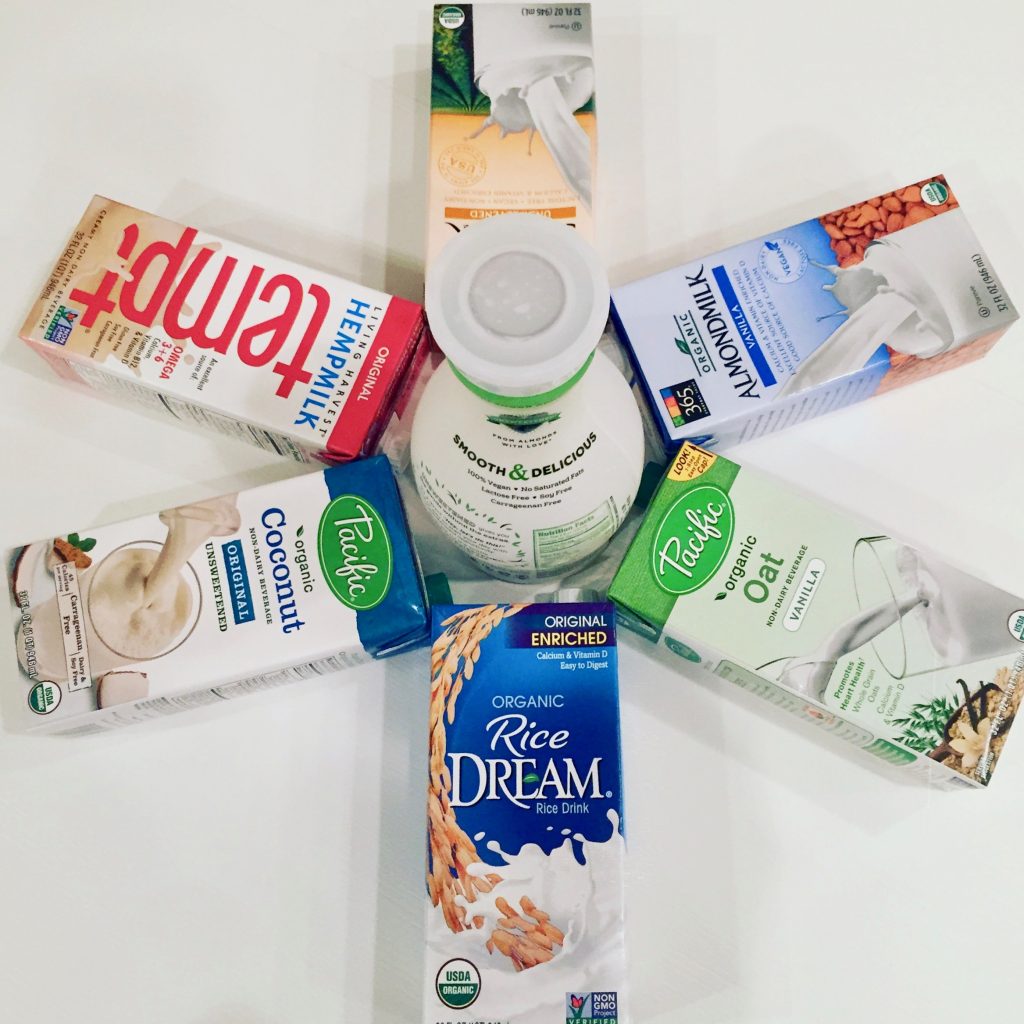Got Milk?
Got Milk? Not so fast. According to the US Department of Agriculture, cow’s milk consumption has dropped about 25% in the past 30 years, while plant-based milk alternatives such as almond, soy, and rice, have increased nearly 11% since 1999! A growing number of Americans are choosing milk alternatives because of lactose intolerance, lower fat and calorie options, and enriched nutrients. Before choosing your milk or milk alternative, however, there are some important things to keep in mind! Here’s what to sip and what to skip:
Check for protein. Soy milk is the only close contender to equal the 8 grams of protein found in each cup of cow’s milk. Almond, rice, and hemp alternatives ring in at only 1 gram per cup, while coconut and cashew options have less than one gram per serving! Protein keeps us feeling fuller for longer. Thus, if your non-dairy milk is low in protein, consider other protein-packed foods such as Greek yogurt, nuts, whole grains, or even chia or flax seeds to bulk up your morning meal.
Look for nutrients. Cow’s milk is packed with nutrients such as calcium, vitamin D, vitamin B-12, and potassium. Check the vitamins and minerals to assure your milk alternative measures up to cow’s milk nutrient levels. Milk is well known for its calcium content, with good reason. Each glass of milk (8 oz.) provides about 300 mg. calcium (approximately 30% of an adult’s daily requirements). However, many milk alternatives contain merely 10% of our daily needs.
Skip added sugars. Each cup of cow’s milk has 12 grams of natural sugar, also known as lactose. In contrast, almost all of the sugar found in milk alternatives is from added sugars such as cane sugar, brown rice syrup, etc. Look for unsweetened or original versions of your alternative. Most of these will not have more than 1 or 2 grams of added sugars per cup. Also beware of sugary grain milks that add enzymes to break down starches into sugar such as some oat, rice, or hemp milks, as these can reach as high as 20 grams of sugar per serving!
Bottom Line: Milk doesn’t have to be the only way we receive calcium and other important nutrients that it provides. Consider adding Greek yogurt to lunch, snack on cottage cheese, or toss almonds in your breakfast cereal. Dark, leafy greens such as kale, swiss chard, and spinach also are packed with this bone-building mineral. However, to meet our daily requirements through greens alone, you may not have enough room for anything else! It takes about 10 oz. of raw spinach to equal the calcium content in one glass of milk. Further, dark greens contain varying amounts of oxalic acid that binds calcium and reduces absorption. If you choose a milk alternative, be sure to read the ingredients to understand what else may be lurking in your non-dairy beverage!
WANT MORE? See this RESEARCH on switching to a non-dairy alternative.
WATCH THIS! See LARA on FOX 32 News: March 30, 2016
